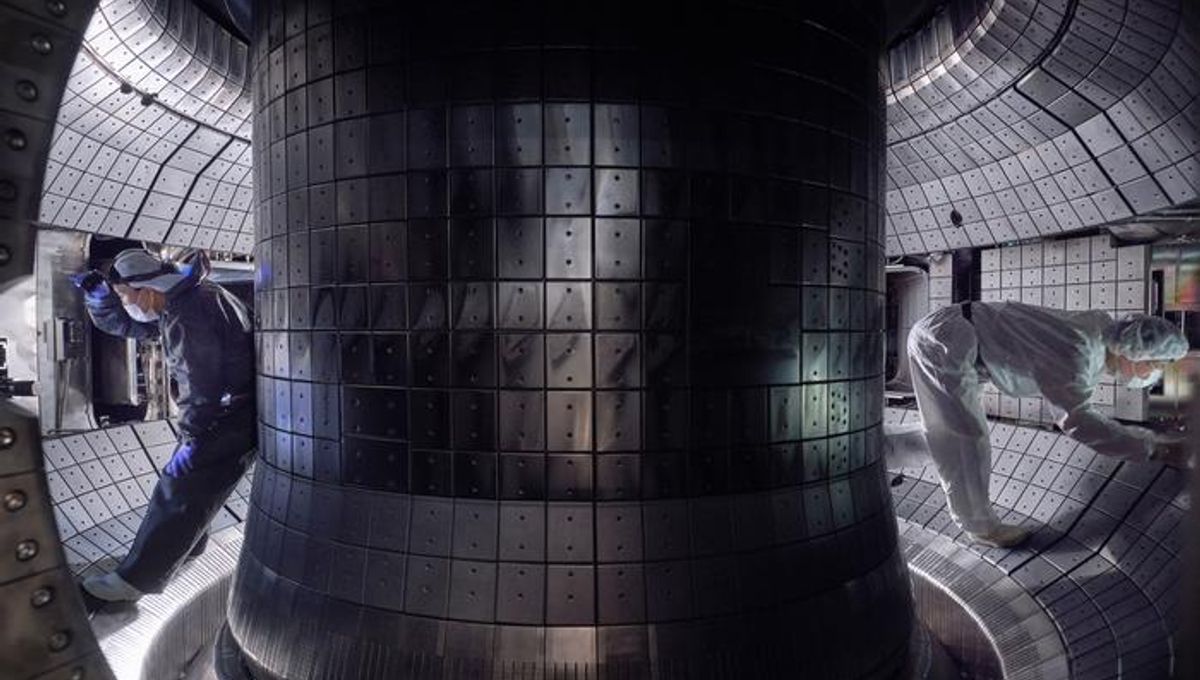
Korea Superconducting Tokamak Advanced Research, or KSTAR, is one of the most advanced test fusion reactors on the planet. Nicknamed the Korean artificial sun, it has now demonstrated sustained fusion temperature for almost a minute and the ability to contain extremely hot plasma for over 100 seconds.
Fusion is what powers stars, but in stars, it happens at lower temperatures than we need to do it here on Earth. That’s because gravity is keeping everything packed together so fusion is more likely to happen. So the temperature required on Earth for a Tokamak system – which is a donut-shaped reactor – is about seven times the temperature at the core of the Sun: 100 million °C (180 million °F).
KSTAR first reached this threshold in 2018 but only for 1.5 seconds. A year later, they were able to keep the plasma that hot for 8 seconds, increasing it to 20 seconds in 2020. The last record was in 2021, when the plasma was kept that hot for half a minute. Since then, the team at the Korea Institute of Fusion Energy (KFE) has upgraded the device by building a new tungsten divertor environment and they have pushed the temperature for longer.
Now, KSTAR can sustain 100 million °C for 48 seconds – and it can keep hot plasma in the high-confinement mode (also known as H-mode) for 102 seconds. The goal is to achieve 300 seconds of burning plasma by the end of 2026.
“Despite being the first experiment run in the environment of the new tungsten divertors, thorough hardware testing and campaign preparation enabled us to achieve results surpassing those of previous KSTAR records in a short period,” Dr Si-Woo Yoon, Director of the KSTAR Research Center, said in a statement.
“To achieve the ultimate goal of KSTAR operation, we plan to sequentially enhance the performance of heating and current drive devices and also secure the core technologies required for long-pulse high performance plasma operations.”
Beyond the tungsten divertors, the whole system has been tested for how it behaves under the fusion regime. Experiments like KSTAR or the Joint European Torus (JET) – which has broken a different record recently – are testbeds for both our ability to fuse using a tokamak and for the technology needed to make the fusion achievable, efficient, and sustainable.
KSTAR and JET are pathfinder reactors paving the way for prototypes like ITER and DEMO, which are full-scale prototypes of nuclear fusion reactors. ITER will come on next year and should generate 10 times as much energy as put in. Its successor, DEMO, will generate electricity and 25 times the energy put in.
“This research is a green light for acquiring core technologies required for the fusion DEMO reactor,” added KFE President, Dr Suk Jae Yoo. “We will do our best to secure core technologies essential for the operation of ITER and the construction of future DEMO reactors.”
DEMO is expected to begin construction soon as building plans are expected to be concluded this year.
Source Link: Korean Fusion Reactor Breaks Record, Staying 7 Times Hotter Than The Sun's Core